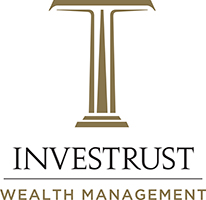The terms growth and value are often used to describe two different investment strategies, yet many investors may want both qualities in an investment. Famed investor Warren Buffett put it this way in a 2015 interview: “I always say if you aren’t investing for value, what are you investing for? And the idea that value and growth are two different things makes no sense…. Growth is part of the value equation.”1
Even so, analysts may look at specific stocks as offering more growth potential than value, and vice versa. And these concepts are used to construct many mutual funds and exchange-traded funds (ETFs). So it’s helpful to understand the opposing ideas, even if you want the best of both in your portfolio.
Poised to grow?
As the name suggests, growth stocks are associated with companies that appear to have above-average growth potential. These companies might be on the verge of a market breakthrough or acquisition, or they may occupy a strong position in a growing industry.
Growth companies may place more emphasis on reinvesting profits than on paying dividends (although many large growth companies do offer dividends). Investors hope to benefit from future capital appreciation of growth stocks, which tend to be considered higher risk than value stocks. However, it’s equally important for growth and value stocks to have strong fundamentals.
Undervalued?
Value stocks are associated with companies that appear to be undervalued by the market or are in an industry that is currently out of favor. Unlike growth stocks, which might seem expensive and overvalued, value stocks may be priced lower in relation to their earnings, assets, or growth potential.
Established companies are more likely than younger companies to be considered value stocks, and these firms may emphasize paying dividends over reinvesting profits. An investor who purchases a value stock typically expects the broader market to eventually recognize the company’s full potential, which may result in rising share prices. One risk with this approach is that a stock considered to be undervalued because of legal or management difficulties or tough competition might not be able to recover from the setback.
Focused funds
Identifying specific growth or value investments requires time, knowledge, and experience to analyze stock data. A more convenient and accessible way to add growth or value stocks to your portfolio may be through mutual funds or ETFs that focus on these categories. Such funds often have the word “growth” or “value” in their names. However, there could be a wide variety of objectives and stock holdings among funds labeled growth or value.
Also keep in mind that you might find growth, value, or both in a broad range of investments that do not employ growth or value strategies.
Diversification
Holding growth and value stocks and/or funds is one way to diversify the stock portion of your portfolio. Over the past 20 years, the average annual return for value stocks was about 1.5 percentage points higher than that of growth stocks (8.54% versus 7.02%). Yet growth stocks outperformed value stocks in eight of those years — in some years by large margins. This suggests that growth and value stocks may respond differently to varying market conditions.2
Diversification is a method used to help manage investment risk; it does not guarantee a profit or protect against investment loss.
The return and principal value of stocks, mutual funds, and ETFs fluctuate with changes in market conditions. Shares, when sold, may be worth more or less than their original cost. Supply and demand for ETF shares may cause them to trade at a premium or a discount relative to the value of the underlying shares.
Mutual funds and ETFs are sold by prospectus. Please consider the investment objectives, risks, charges, and expenses carefully before investing. The prospectus, which contains this and other information about the investment company, can be obtained from your financial professional. Be sure to read the prospectus carefully before deciding whether to invest.
1CNBC.com, March 2, 2015
2 Thomson Reuters, 2016, for the period 9/30/1996 to 9/30/2016. Growth stocks are represented by the Russell 3000 Growth Index. Value stocks are represented by the Russell 3000 Value Index. The performance of an unmanaged index is not indicative of the performance of any particular investment. Individuals cannot invest directly in an index. Rates of return will vary over time, particularly for long-term investments. Past performance is not a guarantee of future results.
Prepared by Broadridge Investor Communication Solutions, Inc. Copyright 2017
